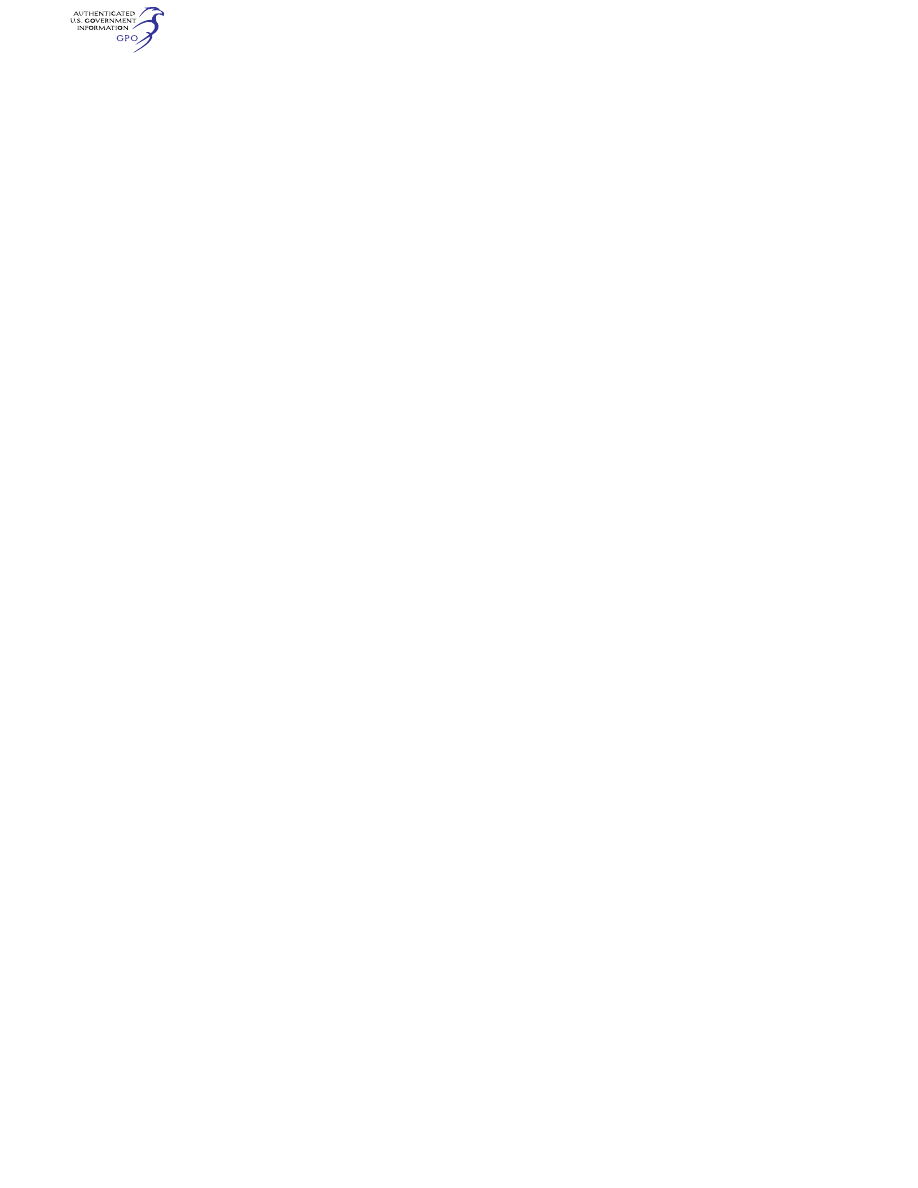
535
Federal Aviation Administration, DOT
§ 27.965
by test to operate satisfactorily (with-
in certification limits) when using fuel
at a temperature of 110
°
F under crit-
ical operating conditions including, if
applicable, the engine operating condi-
tions defined by § 27.927 (b)(1) and (b)(2).
[Amdt. 27–23, 53 FR 34212, Sept. 2, 1988]
§ 27.963
Fuel tanks: general.
(a) Each fuel tank must be able to
withstand, without failure, the vibra-
tion, inertia, fluid, and structural loads
to which it may be subjected in oper-
ation.
(b) Each fuel tank of 10 gallons or
greater capacity must have internal
baffles, or must have external support
to resist surging.
(c) Each fuel tank must be separated
from the engine compartment by a
firewall. At least one-half inch of clear
airspace must be provided between the
tank and the firewall.
(d) Spaces adjacent to the surfaces of
fuel tanks must be ventilated so that
fumes cannot accumulate in the tank
compartment in case of leakage. If two
or more tanks have interconnected
outlets, they must be considered as one
tank, and the airspaces in those tanks
must be interconnected to prevent the
flow of fuel from one tank to another
as a result of a difference in pressure
between those airspaces.
(e) The maximum exposed surface
temperature of any component in the
fuel tank must be less, by a safe mar-
gin as determined by the Adminis-
trator, than the lowest expected
autoignition temperature of the fuel or
fuel vapor in the tank. Compliance
with this requirement must be shown
under all operating conditions and
under all failure or malfunction condi-
tions of all components inside the
tank.
(f) Each fuel tank installed in per-
sonnel compartments must be isolated
by fume-proof and fuel-proof enclosures
that are drained and vented to the ex-
terior of the rotorcraft. The design and
construction of the enclosures must
provide necessary protection for the
tank, must be crash resistant during a
survivable impact in accordance with
§ 27.952, and must be adequate to with-
stand loads and abrasions to be ex-
pected in personnel compartments.
(g) Each flexible fuel tank bladder or
liner must be approved or shown to be
suitable for the particular application
and must be puncture resistant. Punc-
ture resistance must be shown by
meeting the TSO-C80, paragraph 16.0,
requirements using a minimum punc-
ture force of 370 pounds.
(h) Each integral fuel tank must have
provisions for inspection and repair of
its interior.
[Doc. No. 5074, 29 FR 15695, Nov. 24, 1964, as
amended by Amdt. 27–23, 53 FR 34213, Sept. 2,
1988; Amdt. 27–30, 59 FR 50387, Oct. 3, 1994]
§ 27.965
Fuel tank tests.
(a) Each fuel tank must be able to
withstand the applicable pressure tests
in this section without failure or leak-
age. If practicable, test pressures may
be applied in a manner simulating the
pressure distribution in service.
(b) Each conventional metal tank,
nonmetallic tank with walls that are
not supported by the rotorcraft struc-
ture, and integral tank must be sub-
jected to a pressure of 3.5 p.s.i. unless
the pressure developed during max-
imum limit acceleration or emergency
deceleration with a full tank exceeds
this value, in which case a hydrostatic
head, or equivalent test, must be ap-
plied to duplicate the acceleration
loads as far as possible. However, the
pressure need not exceed 3.5 p.s.i. on
surfaces not exposed to the accelera-
tion loading.
(c) Each nonmetallic tank with walls
supported by the rotorcraft structure
must be subjected to the following
tests:
(1) A pressure test of at least 2.0 p.s.i.
This test may be conducted on the
tank alone in conjunction with the test
specified in paragraph (c)(2) of this sec-
tion.
(2) A pressure test, with the tank
mounted in the rotorcraft structure,
equal to the load developed by the re-
action of the contents, with the tank
full, during maximum limit accelera-
tion or emergency deceleration. How-
ever, the pressure need not exceed 2.0
p.s.i. on surfaces not exposed to the ac-
celeration loading.
(d) Each tank with large unsupported
or unstiffened flat areas, or with other
features whose failure or deformation
VerDate Sep<11>2014
09:06 Jun 28, 2024
Jkt 262046
PO 00000
Frm 00545
Fmt 8010
Sfmt 8010
Y:\SGML\262046.XXX
262046
jspears on DSK121TN23PROD with CFR
